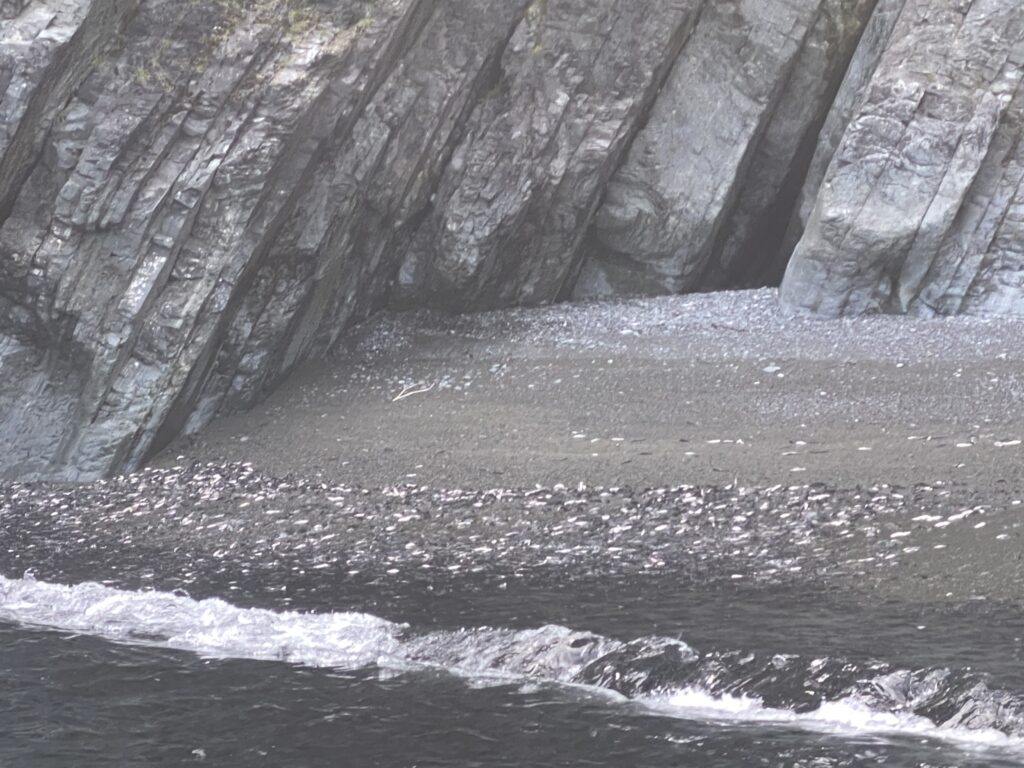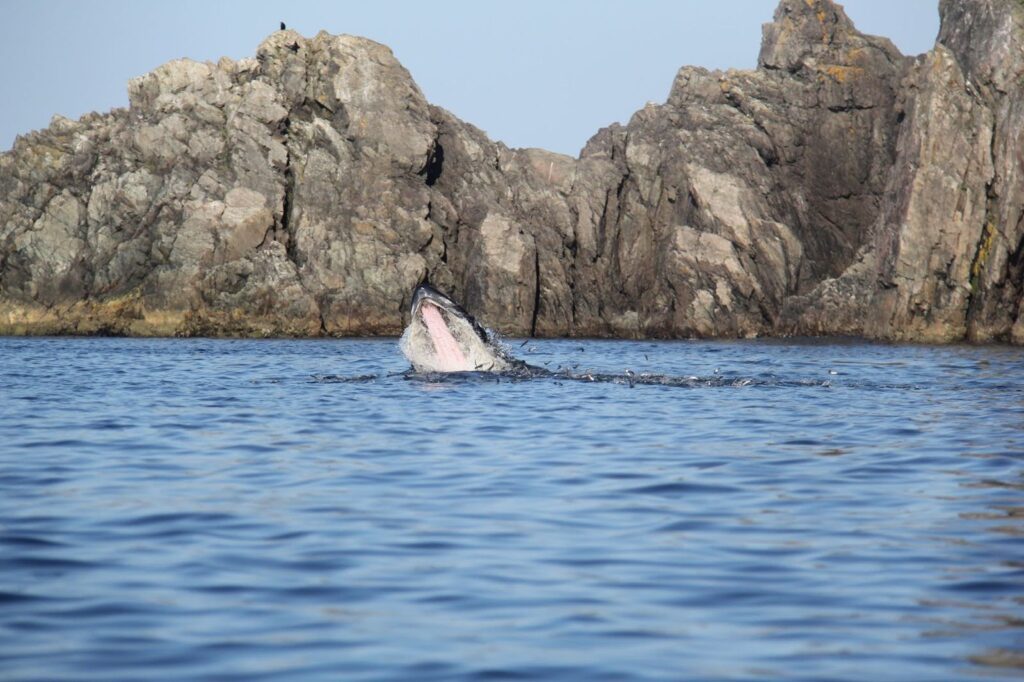The Tiny But Mighty – Capelin!
In Newfoundland, cod fish is king, but there is another fish that is critical to the survival of the ecosystem. The little fish that is responsible for bringing the cod, whales, seals and seabirds inshore in the summer is capelin. Capelin are small schooling fish that migrate from offshore to inshore in the summer months in Newfoundland. Averaging about 15cm in length, these fish reach maturity at around 3-4 years of age. Large schools of capelin make their mass migration inshore to lay their eggs on the beaches. Yes, capelin spawn on the beaches!
Trinity Bight is blessed with a multitude of capelin spawning beaches. A particular slope and grain size of sediment is required in these beaches to ensure the survival of the eggs. This is just one of many examples of how the geology within the Discovery UNESCO Geopark influences the biology and settlement of the area.

Male capelin have a spawning ridge which protrudes along the length of their sides during the spawning period along their lateral line. This ridge helps two males to sandwich a female in between them and escort her up onto the beach. The males will help the female to release her eggs by tapping her belly with their tails. Once the eggs are laid, the females that are able will return to the water while the males fertilize the eggs on the beach. Most of the fish will die during spawning or shortly after and become food for birds and land mammals like foxes and black bears. Capelin will often spawn from dusk until dawn in an attempt to avoid predation while they are on the beaches. Sometimes, capelin will spawn or roll as it is sometimes called, on foggy days as the fog also provides some protection from predators.

This mass migration of capelin to the beaches causes a mass migration of cod fish inshore. It is this migration that made it possible for fishermen in row and sail boats to catch cod. This contributed to the settlement of Newfoundland! The first settlers here would come only for the summer cod fishery and return to Europe in ships laden with salted cod. Inshore movement of capelin also influences the nesting seabirds. Many of the largest nesting colonies are located very close to capelin spawning beaches to insure the most readily available food source for feeding chicks.

Bald eagles also seem to favour nests near capelin spawning beaches. They will eat capelin but usually prefer the larger fish to come in to feed on the capelin. Whales also follow the capelin inshore and feed sometimes VERY close to the spawning beaches! It is estimated a humpback whale eats 1 to 1.5 tonnes of capelin a day!

Even humans get in on the action. Capelin rolling on the beach attract people who catch them with casting nets or even their hands. These fish are pan fried, smoked and dried or used to fertilize vegetable gardens. There nothing quite like being on a beach in the evening with your neighbours casting capelin, watching whales and seabirds feed and enjoying each other’s company.
Want to see capelin rolling on beaches this summer? Book a tour with Sea of Whales – we can give you a front row seat!
This entry was posted in Sea of Whales Blog by Sea Of Whales Adventures. Bookmark the permalink.
